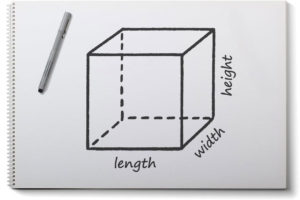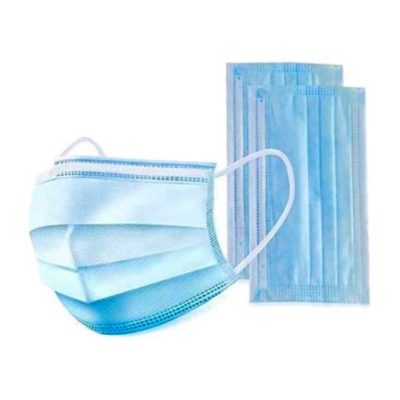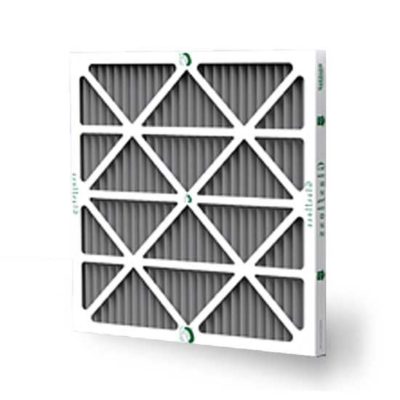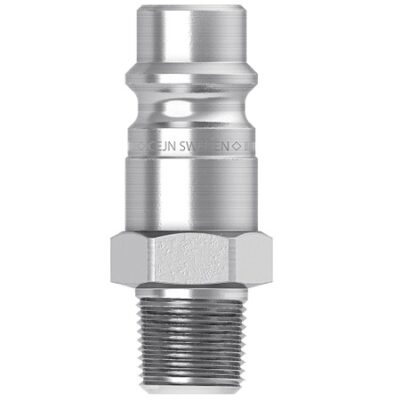When looking at industrial products, how do you know how much CFM to move? What is CFM? How do you measure your room size? Proper ventilation is important in any environment, but it’s even more important in an industrial setting. Bringing in the right amount of “fresh air” can be the difference between a healthy and unhealthy work environment.
Measuring and understanding CFM is not as difficult as you might think.
DID YOU KNOW:
High-quality air filters rated MERV-13 and higher help filter harmful viruses, bacteria, and allergens from the air your breathe.
What is CFM?
CFM stands for Cubic Feet per Minute and is the most common way to measure airflow. Areas are measured in square units (like square feet). Volumes (like a room full of air) are measured in cubic units — CFM determines how much cubic feet can be moved or exchanged each minute.
A room measuring 1,000 ft³ would need a 1,000 CFM system to replace all the air each minute.
How Do I Measure the Volume of a Room?
Many rooms are simple boxes, or rectangular prisms. Volume is determined by multiplying length × width × height. A room that is 100 feet long, 50 feet wide, and 20 feet tall is 100,000 feet³ (100 × 50 × 20 = 100,000).
Some spaces have irregular walls, angled ceilings, or other features that make them more difficult to measure. Don’t worry though — complicated shapes can be separated into simple shapes to be measured, and then the measurements can be combined together again to get the total.
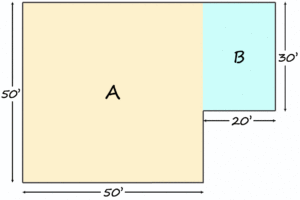
In the example shown to the right, the area of this irregularly shaped room can be measured by first measuring space A (50′ × 50′ = 2,500 ft²) and then adding that to space B (20′ × 30′ = 600 ft²). This room has a total area of 3,100 ft².
To get the volume of any shape, just multiply the total area by the average height (not shown in our simple drawing).
How Frequently Do I Need to Exchange Air?
Now that you know the volume of air in your space, you need to determine how quickly it needs to be exchanged. Specific airflow requirements depend on your particular setup, but here are few general examples of recommended exchange rates:
Engine Room, Generator Room, Boiler Room – Every 1-4 minutes
These rooms have potentially dangerous exhaust fumes that need to be removed quickly so all air should be cycled every 1-4 minutes. If you have a 2000 cubic foot engine room, you would want a system that can move 500-2000 CFM.
Kitchen, Cafeteria, Bakery, Bar, Laboratory – Every 2-5 minutes
Laboratories and spaces food is prepped or served generally require moderate-to-high air circulation (roughly every 2-5 minutes). For a 2,000 ft³ food-related area or laboratory, you would want to aim for a system that can handle approximately 400-1000 CFM.
Warehouse, Industrial, Machine Shop, Factory – Every 3-7 minutes
While not quite as intensive as engine rooms or food spaces, most industrial areas still require steady airflow to remove work-related fumes and to keep the air clean. An example 2,000 ft³ industrial area would generally require a system that can push 280-670 CFM.
Classroom, Home, Office, Store, Gymnasium, Restroom, Auditorium – Every 4-10 minutes
Homes and public spaces like conference rooms, retails stores, and offices are slightly less-demanding than the other types of rooms mentioned above. For these rooms the exchange of air is usually not as critical and a 2,000 ft³ space would require a system capable of moving 200-500 CFM.
How Much CFM Do I Need?
Once you’ve determined the volume of your space and have decided how quickly you will need to exchange the air in a room, you can calculate the CFM needed for your system.
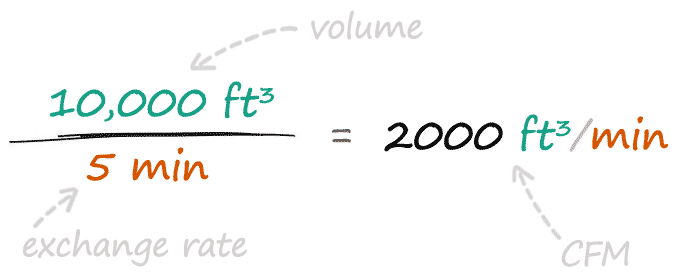
Start with the total volume of air (in cubic feet), divide by the exchange rate (how quickly you want to replace the air), and the result is the total CFM you need for your system.
Keep in mind that many applications (especially large areas) use more than one fan/blower. It often makes sense to use many smaller units rather than a single, large unit to handle the total CFM.
Wrap-Up
You see? Measuring cubic feet per minute isn’t as difficult as you might think: just measure the volume of the room and divide by how quickly you want to replace the air, and that’s it!
Now that you have a better idea of what CFM you need, you can make more educated decisions when shopping for items like Fans, Evaporative Coolers, or Portable Heaters.
Continue Reading: You might also like our article about The Last Guide To Air Filters You’ll Ever Need!

Call ISC Sales today at 877.602.0010 to get a free quote or to ask about our lineup of industrial equipment. You can also request a quote online, HERE.


